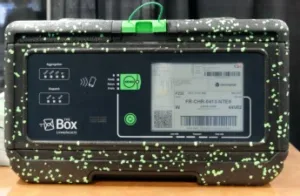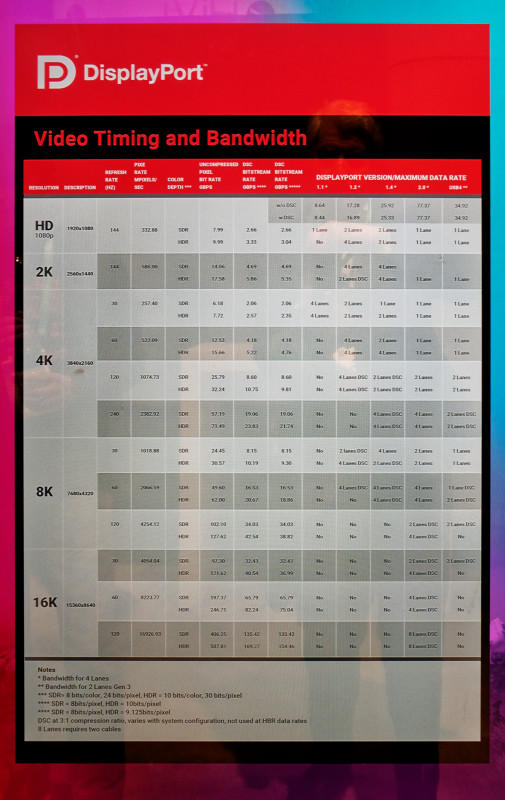CES 2020 had plenty of display interest, and this is the first of at least two ’round-ups’ that I plan to do to cover the, more or less random, things that I noticed at the event.
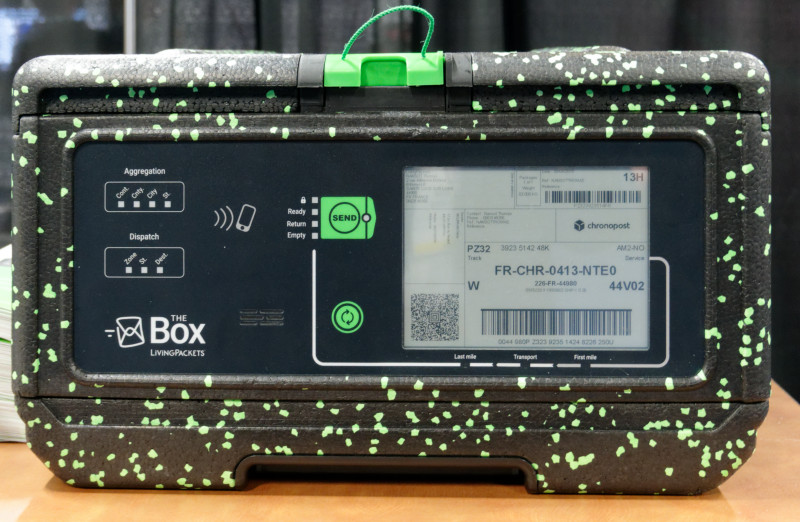
The Box is in an intriguing application for E Ink displays. The box is a ‘smart’ packaging box that includes a display, a GPS locator and wireless system. The E Ink display shows the shipping information. “Why would you spend money on such a box?”, I asked. The company told us that the point is that you don’t buy the box, you just use it to ship your goods, which are very well protected. You simply pay the shipment charge. The company makes its money by getting a share of the shipping cost over the life of the box. The more it’s used, the more they make back towards the cost. Because it is smart, the company can track where the box is and can give incentives to get the box back if someone is not using it.
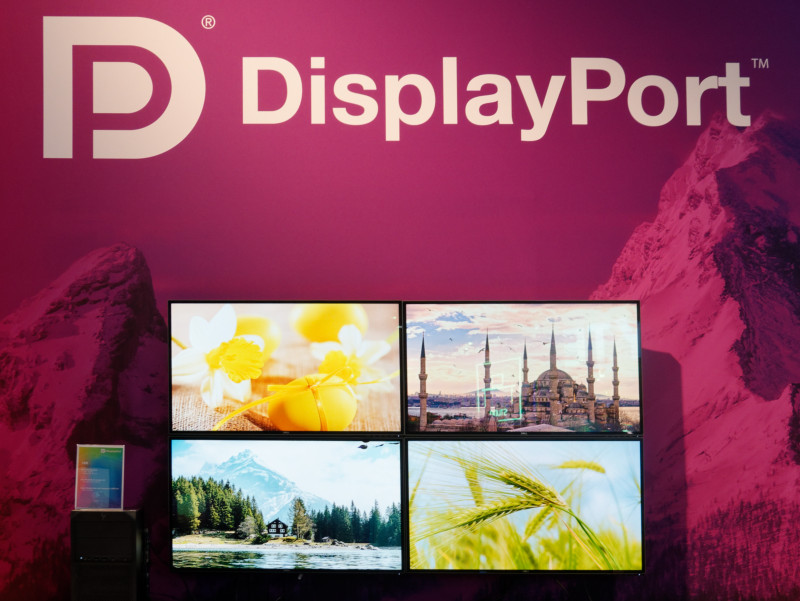
VESA was at the show, as usual, with an update on the development of DisplayPort. The group was able to demonstrate a 16K display, made up of four 8K displays. At the moment, this is running as four DisplayPort 1.4 channels, but later this year, the plan is to be able to run this kind of display system with a single DisplayPort 2 connection. One of the topics of conversation was the adoption of DisplayPort by USB 4, which can run the display interface in a tunneling mode, or can support the USB Alt mode. We liked the following graphic that the organisation was showing that highlighted what is possible with different DisplayPort versions.
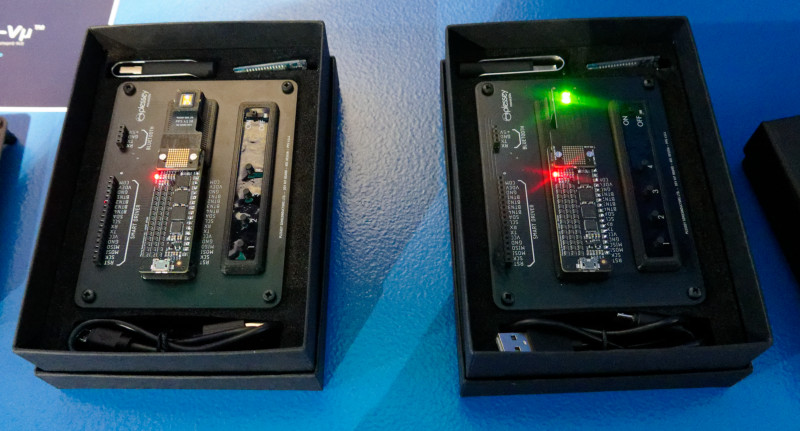
We have covered Plessey Semiconductors quite a lot. (A Visit to Plessey Semiconductor) At CES, the company was demonstrating its GAN on Silicon microdisplays. The company is working with Compound Photonics on a 1080p near to eye microLED device, but I didn’t manage to catch up with them. The 0.26″ display has 3 micron Pitch pixels and the display is made all in GAN. Blue and Green can now be made on the same wafer. The firm told us that it would have a 2K x 2K display by SID Display Week.
The company also said that it can use its technology to make simpler, but very bright 80 segment displays that can have very high levels of brightness and has now created Developers Kits to allow the evaluation of the technology. The kits (pictured) allow for custom designs to be considered as the NRE cost is much lower than for other custom displays, with final displays costing ‘a few dollars each’. The development kits cost around $1,000.
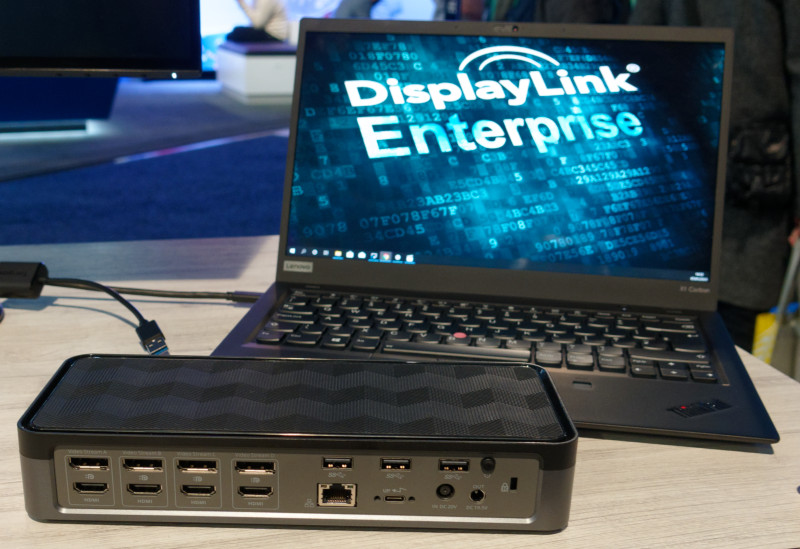
DisplayLink was showing a range of solutions based on its compression technology. It had a useful quad-display dock from Targus that uses its technology, allowing a mixture of HDMI and DisplayPort (any four from eight outputs). It also showed how it can drive big displays over its interfaces making it useful for digital signage.
DisplayLink has a new chip that can support its protocol directly over ethernet. That means very flexible longer range display connections using standard ethernet protocols and a control box can be used to split the display signal from the ethernet data. Separately, a USB connector to the box can be used to provide input data, for example, touch data to be sent back to the PC. With PoE as well, this can mean a touch panel can be easily mounted to control a remote PC (the firm was using a NUC and Logitech Tap in its demo) using just UTP cable.
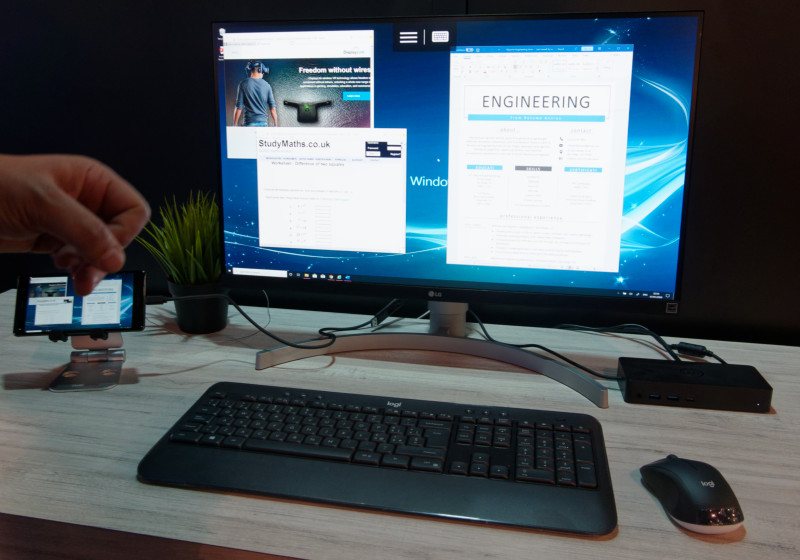
Android is also being supported with the desktop running in a landscape format on a display and the system can also support multiple monitors. (By the way, someone has spotted that LG has now developed a desktop mode in Android) In the longer term, the protocol can be used to migrate to wireless connections and to better support RDP and ‘desktop as a service’ applications.

Seoul Semiconductor was talking about, but not demonstrating, what it is calling its ‘Micro Clean Display’ which is based on a 0.24mm pitch LED configuration – small enough to allow the manufacture of UltraHD displays that are just 42″ diagonal – a long way below what others are talking about. The company is developing the chips, the packaging and the module development, having invented its own mass transfer technology. The microLEDs do not have no wire bonding. It has its own ‘like a flip chip’ technology called Wicop. (https://tinyurl.com/tuok8zd).
In discussions, the firm said that miniLED (using blue/white LEDs) is a challenge at the moment, with as much as 40% of modules needing rework. On the other hand, the company claims a yield of 98% for its mass transfer technology and told us that it is binning the LEDs before transfer to optimise display quality.
I’ll be back next week with some more items. (BR)

